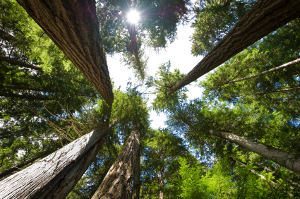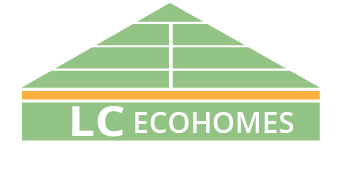The Green Facts on Western Red Cedar
Nov 23, 2010
When considering timber for external cladding purposes, probably the biggest single factor, is its durability. Other important follow on factors are of course, Price and Availability.
Western Red Cedar (WRC) has been called the world’s most sustainable resource – not surprising to those who work with it. As one of the world’s “most thoroughly researched woods,” Western Red Cedar produces fewer greenhouse gases, generates less water and air pollution, and requires less energy to produce than alternatives. Here’s how it stacks up when compared to other building materials.
Sustainability
The Western Red Cedar products sourced by LC Ecohomes come from forests that are being regenerated, where wildlife habitat is protected and the biodiversity of the forest is maintained. Compared to non-wood building materials, Western Red Cedar from managed forests is the most sustainable, eco-friendly building product available
The Western Red Cedar used in LC Ecohomes home packages is sourced from areas practicing sustainable forestry management.
- Wood (Inc.WRC)
- Total Energy Use
- Greenhouse Gases
- Air Pollution
- Water Pollution
- Solid Waste
- Ecological Resource Use
- Wood (Inc.WRC)
- Lowest
- Lowest
- Lowest
- Lowest
- Lowest
- Lowest
- Steel
- 140% more
- 45% more
- 42% more
- 1900% more
- 36% more
- 16% more
- Concrete
- 70% more
- 81% more
- 67% more
- 90% more
- 96% more
- 97% more
Energy Efficiency
Western Red Cedar (and wood in general) surpasses steel and concrete in energy efficiency through its qualities of:
- Thermal performance
- Heat conductivity
- Building codes
- Insulation
Environmental Impact
Western Red Cedar is carbon neutral. In an extensive study that compared it to vinyl, fiber-cement and brick in accordance with international standards in the ISO14040/44 series, Western Red Cedar received top marks in five to seven impact criteria, including “global warming potential.”
Solid Performance
In the same international standards study, in the case of decking, Western Red Cedar substantially outperformed wood-plastic-composite (WPC) decking products. This finding occurred regardless of the recycled content of the plastic content in the WPC, across all environmental metrics examined in the study.
Universal Appeal
Western Red Cedar is a dimensionally stable, highly weather resistant wood. These characteristics have made it the most popular wood for cladding in North America over hundreds of years. Since cedar is virtually pitch and resin free, it easily accepts a range of finishes, or can be left untreated to take on a natural, silver-gray patina.
Unsurpassed in beauty, durability and value, Western Red Cedar is the natural choice for building projects. Certified to meet rigid environmental standards, Western Red Cedar justifiably holds the title of “nature’s green building material.”


